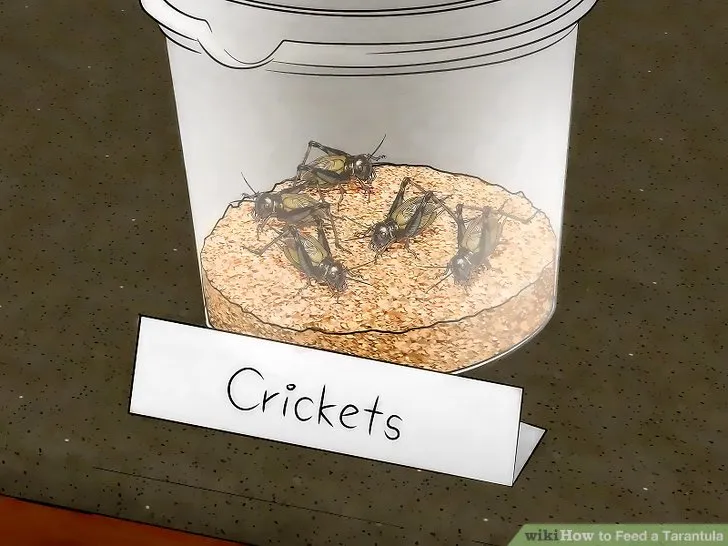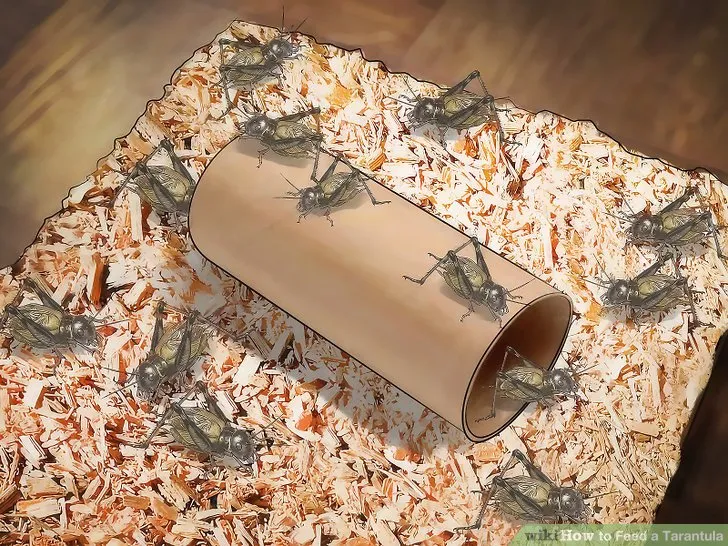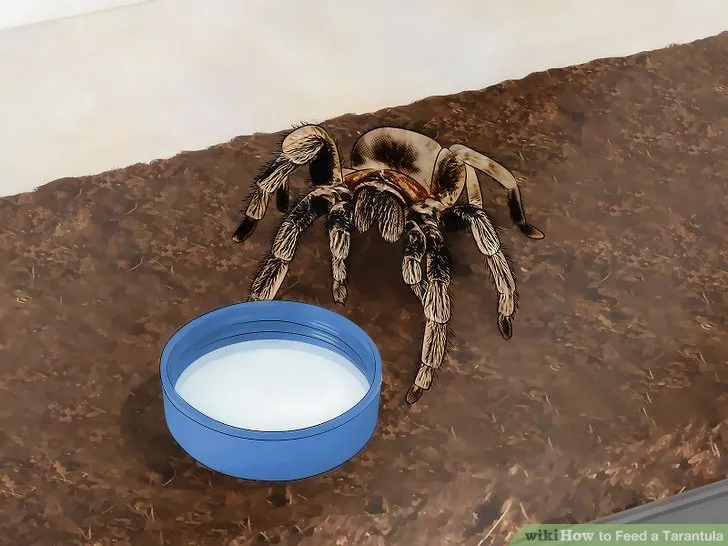Caring for a tarantula can be a rewarding experience, and understanding how to feed your pet tarantula is one of the most crucial aspects of ensuring its health and longevity. This comprehensive guide will delve into the intricacies of feeding, providing you with the knowledge and techniques necessary to help your tarantula thrive. From understanding their natural diet to choosing the right prey and maintaining the perfect environment, we’ll cover everything you need to know to be a successful tarantula owner. Get ready to transform your approach to pet ownership and become a well-versed tarantula caretaker. The health of your tarantula directly correlates to the attention you pay to its diet and general welfare. Let’s discover how to offer the very best life to your eight-legged friend!
Understanding Tarantula Feeding Habits
Before you can feed your tarantula effectively, it’s essential to understand their natural feeding habits. In the wild, tarantulas are opportunistic predators, meaning they’ll eat whatever is available. They are ambush hunters, relying on their keen senses and speed to capture prey. Their diet primarily consists of insects, but can also include small vertebrates like lizards, mice, and even small birds depending on the species and location. Understanding these habits will inform your feeding strategies and help you replicate a more natural environment for your pet.
Natural Diet of Tarantulas
In their natural habitats, tarantulas have a diverse diet that varies based on their species, location, and the availability of food. The diet of a tarantula in the wild can range from small invertebrates to much larger prey items. The ability to eat a varied diet is why they have survived and thrived for so long. Their instinct and appetite drive them to eat, and keeping them fed with appropriate food will provide them with the energy they need to move around, hunt, and thrive. The tarantulas’ appetite and feeding habits are one of the most fascinating and crucial elements in the overall well-being of your eight-legged companion.
Common Prey Items

The most common prey items for wild tarantulas include insects. Crickets, grasshoppers, beetles, and moths are frequently consumed. The size of the prey is crucial, and it needs to fit the size of the tarantula. The younger tarantulas feed on fruit flies. As tarantulas grow, their prey size increases. The availability of specific insects in their natural habitat also impacts their diet. In some cases, they may also consume small vertebrates like lizards, mice, and sometimes even small birds. This diet diversification is crucial for their health. The diet in captivity needs to simulate what they would eat in the wild, or the health will be negatively impacted.
Importance of a Balanced Diet
Providing a balanced diet is paramount to your tarantula’s health and longevity. A diet composed primarily of crickets can be sufficient, but it’s best to supplement it with a variety of insects to provide essential nutrients. The best method is to rotate different insect types, such as mealworms, roaches, and other appropriately sized insects. The diet is important because it helps maintain optimal health, promotes growth, and strengthens the immune system. A diverse diet is also more likely to meet all your tarantula’s nutritional needs, leading to a healthier and more active pet. A healthy tarantula is a happy tarantula, and a balanced diet is one of the main reasons.
Feeding Frequency and Portion Sizes
The frequency and portion sizes of feeding depend on the age and size of your tarantula. Overfeeding can lead to several health problems, so moderation is crucial. Younger tarantulas, or spiderlings, require more frequent feedings than adults, as they are constantly growing. For example, spiderlings may need to be fed two to three times a week, while adult tarantulas can be fed once a week or even less frequently. The best approach is to observe your tarantula and adjust the feeding schedule accordingly to its activity level and body condition.
Determining the Right Feeding Schedule

The right feeding schedule is not a one-size-fits-all approach. The right feeding schedule will depend on the species, age, and metabolic rate. As a general rule, younger tarantulas should be fed more often, about every three to four days. Adult tarantulas, however, can be fed less frequently, with a week or more between feedings being common. You can usually determine the feeding frequency by observing the abdomen. If the abdomen is large and round, you may be feeding too often. If it’s small, the tarantula may need to eat more. If the abdomen appears too small, you may need to increase the frequency of feeding.
Portion Control for Healthy Growth
Portion control is key to ensuring the healthy growth of your tarantula. A good rule is to offer prey items that are no larger than the tarantula’s body size. Overfeeding can lead to obesity and other health issues, while underfeeding can stunt growth. Monitor your tarantula’s abdomen; it should be appropriately sized, not too thin or too large. If your tarantula consistently refuses food, it may be molting, in which case it’s best to remove the prey and wait until it’s done. Providing too much food is often a problem, so starting with small portions and adjusting the frequency will help maintain a healthy lifestyle.
Choosing the Right Prey for Your Tarantula
Selecting the appropriate prey is critical for the health and well-being of your tarantula. The prey should be nutritious, readily available, and safe to consume. Always choose prey items that are free of parasites or pesticides, as these can be harmful to your pet. The most commonly used prey items are crickets and mealworms. But, varying the diet by including other options like roaches or other insects will provide a more balanced and enriching diet for your tarantula. A healthy diet will lead to more energy and a longer lifespan for your eight-legged friend.
Live vs. Pre-Killed Prey

The choice between live and pre-killed prey is another consideration. Most tarantulas prefer live prey, as this stimulates their natural hunting instincts and provides enrichment. However, there are risks involved with live prey, such as injury to the tarantula. If you choose to feed live prey, always supervise the feeding and remove any uneaten insects within 24 hours. Pre-killed prey offers a safer alternative, as the risk of injury is eliminated. Pre-killed prey is recommended for beginners. If you opt for pre-killed prey, make sure it is freshly killed and has not been stored improperly, as this can lead to contamination and sickness.
Safe Prey Selection
Selecting safe prey is a crucial step in tarantula care. The prey you offer should be free of diseases and pesticides. Always source your prey from a reputable supplier, as these suppliers will guarantee the health of the insects. Never feed your tarantula insects that have been caught in the wild, as they may carry parasites, pesticides, or other diseases. The size of the prey is also important: it should be appropriately sized for the tarantula. As a general rule, the prey should not be larger than the tarantula’s body. If you are unsure about the safety of a prey item, it’s best to err on the side of caution and choose another option.
Handling and Feeding Techniques
Proper handling and feeding techniques are essential to ensure the safety of both you and your tarantula. Tarantulas are generally not aggressive, but they can bite if they feel threatened. When handling your tarantula, do so carefully and avoid any sudden movements. It’s best to avoid handling your tarantula unless absolutely necessary, as this can stress them out. Similarly, when feeding, use tools like tongs or long tweezers to offer the prey. These tools will help you avoid getting too close to the tarantula. Use feeding tongs for a safe, hands-off approach. Use them to carefully introduce the prey to your tarantula. The careful approach will also protect you from a possible bite.
Introducing Prey to Your Tarantula

When introducing prey to your tarantula, do so gently and cautiously. Place the prey item near your tarantula, and allow the tarantula to initiate the hunt. Avoid dropping the prey directly onto the tarantula, as this may startle it. If the tarantula does not show interest, you can gently nudge the prey item with the tongs to attract its attention. It may take some time for your tarantula to begin to feed, so patience is required. Some tarantulas can be picky eaters. Don’t worry if your tarantula doesn’t eat immediately. Offer the prey item and see what happens, but don’t push it. If the tarantula doesn’t eat within a day or two, remove the prey item.
Removing Uneaten Prey
It is crucial to remove any uneaten prey from the enclosure within 24 hours. Uneaten prey can stress your tarantula, potentially bite, or even transmit diseases or parasites. Remove the prey with the tongs. Carefully search the enclosure and ensure you have removed any remaining prey. Keeping the enclosure clean will protect your pet’s health and well-being. Regularly remove uneaten prey to maintain a healthy and hygienic environment for your tarantula.
Providing Water for Hydration
Besides feeding, providing fresh water is essential for your tarantula’s hydration and overall health. Tarantulas absorb water through their exoskeletons. Always provide a shallow water dish filled with clean, fresh water. Ensure the dish is shallow enough that the tarantula can easily access it without the risk of drowning. Replace the water regularly, ideally every one to two days, to prevent the growth of bacteria and maintain water quality. A water dish is a necessity for all tarantulas. The water dish also helps maintain the correct humidity levels in the enclosure. If you want your tarantula to thrive, never forget water.
Essential Care Beyond Feeding

While feeding is a critical aspect of tarantula care, there are other essential factors to consider to ensure your pet thrives. This includes maintaining the proper enclosure conditions, providing a suitable substrate, and regularly checking on the health of your tarantula. A well-maintained enclosure will give your tarantula the best chance to thrive. Regular observation will help detect any potential health issues early on. With proper care and a good diet, your tarantula will thrive.
Maintaining Optimal Enclosure Conditions
Maintaining optimal enclosure conditions is essential for your tarantula’s well-being. The enclosure should be appropriately sized for the tarantula’s size and species, with enough space for movement and enrichment. The enclosure should have a secure lid to prevent escape. Provide a substrate, such as coco fiber or peat moss. The substrate should be appropriate for the species of your tarantula, and will help to maintain the correct humidity levels. Temperature and humidity levels must be kept within the correct range. Provide hiding places such as cork bark or artificial plants, which will provide security and enrich the environment. A well-maintained enclosure will minimize stress and promote the overall health of your tarantula.
Regular Health Checks
Regular health checks are an essential part of responsible tarantula ownership. Regularly inspect your tarantula for any signs of illness or injury, such as loss of appetite, lethargy, or changes in behavior. Watch out for changes in the abdomen or unusual molting patterns. Observe the overall appearance of the tarantula. If you notice any abnormalities, it’s best to consult a veterinarian specializing in exotic animals. Early detection and treatment can prevent minor issues from becoming major problems. These health checks are an important part of making sure your tarantula has a long and happy life.
In conclusion, providing the right diet is crucial for your tarantula’s health and longevity. By understanding the natural feeding habits of tarantulas, choosing the right prey, and implementing proper feeding techniques, you can ensure your pet thrives. Don’t forget the importance of providing water, maintaining optimal enclosure conditions, and regular health checks. With these tips, you’re well on your way to becoming a successful and responsible tarantula owner. Your dedication to proper care will be rewarded with a happy and healthy pet.
